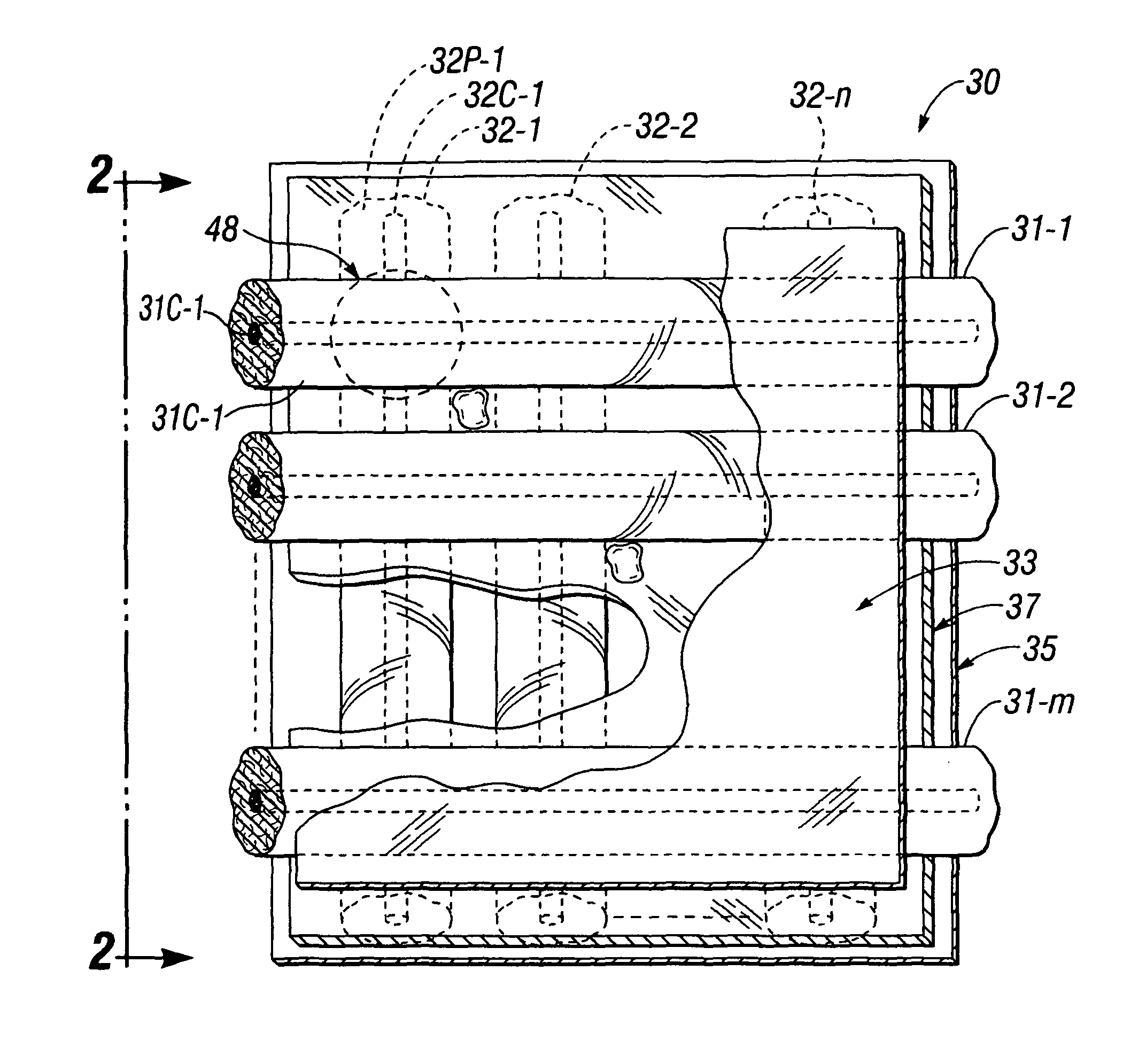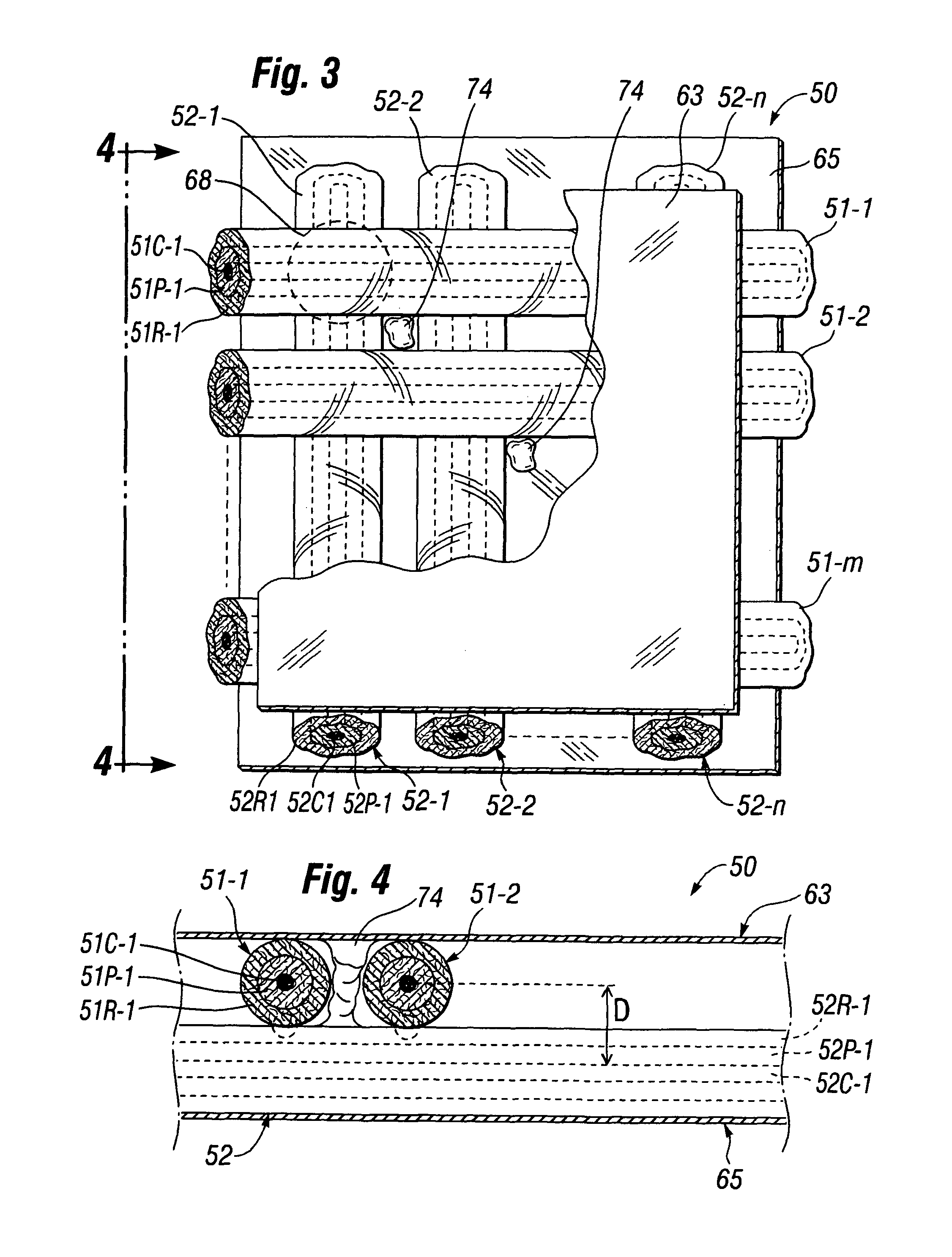Elastically stretchable fabric force sensor arrays and methods of making
a technology of elastic stretch and fabric, applied in the field of transducers or sensors, can solve the problems of affecting tissue damage, causing damage to internal tissues, and generating damagingly large shear stresses, etc., to achieve the effect of limiting the stretch and enhancing the stretchability and conformability of the sensor array according to the present invention
- Summary
- Abstract
- Description
- Claims
- Application Information
AI Technical Summary
Benefits of technology
Problems solved by technology
Method used
Image
Examples
example i
[0134 for forces in the range of 0 to 30 psi:[0135]200 ml of acrylic binder[0136]10 ml of nickel flake powder[0137]10 ml of graphite powder[0138]20 ml of carbon black
[0139]Example II for forces in the range of 0-100 psi[0140]200 ml of acrylic binder[0141]5 ml of nickel flake powder[0142]5 ml of graphite powder[0143]30 ml of carbon black
example iii
[0144 for forces in the range of 0-1000 psi[0145]200 ml of acrylic binder[0146]1 ml of nickel flake powder[0147]1 ml of graphite powder[0148]40 ml of carbon black
[0149]The fabric matrix for piezoresistive sheet 37 is submerged in the piezoresistive coating mixture. Excess material is rolled off and the sheet is hung and allowed to air dry.
[0150]According to the invention, upper and lower substrate sheets 33, 34 are made of a thin, flexible insulating material, such as 0.002 inch thick polyurethane or polyvinyl chloride (PVC). Preferably, the substrate sheets 33, 34 are made of an elastomeric material which has a relatively high degree of elastic stretchability, so that sensor array 30 is readily stretchable and conformable to the surface of an irregularly-shaped object. It can be appreciated, however, that conductive threads 31, 32 should also be elastically stretchable to facilitate stretchability of sensor array 30. This is because conductive threads 31, 32 are affixed to substrat...
embodiment 50
[0157]FIGS. 3 and 4 illustrate another embodiment 50 of a piezoresistive thread pressure sensor array according to the present invention, in which the central piezoresistive layer shown in FIGS. 1 and 2 and described above is replaced by a piezoresistive coating on either, or preferably both, row conductive threads 51 and column conductive threads 52.
[0158]Sensor array 50 is facially similar to sensor array 20 disclosed and shown in FIGS. 1 and 2 of U.S. Pat. No. 6,543,299, but differs from that sensor array in important ways. Thus, row and column piezoresistive threads 51, 52 of sensor array 50 are made of elastically stretchable polymer cores 51C, 52C which have been treated by silver plating the cores to form on the threads electrically conductive coatings 51P, 52P, respectively. The coatings on either or both cores 51C, 52C are clad with a layer 51R, 52R, respectively, of a material which has a piezoresistive characteristic. According to the invention, the piezoresistive materia...
PUM
| Property | Measurement | Unit |
|---|---|---|
| diameter | aaaaa | aaaaa |
| thickness | aaaaa | aaaaa |
| diameter | aaaaa | aaaaa |
Abstract
Description
Claims
Application Information
 Login to View More
Login to View More - R&D
- Intellectual Property
- Life Sciences
- Materials
- Tech Scout
- Unparalleled Data Quality
- Higher Quality Content
- 60% Fewer Hallucinations
Browse by: Latest US Patents, China's latest patents, Technical Efficacy Thesaurus, Application Domain, Technology Topic, Popular Technical Reports.
© 2025 PatSnap. All rights reserved.Legal|Privacy policy|Modern Slavery Act Transparency Statement|Sitemap|About US| Contact US: help@patsnap.com



